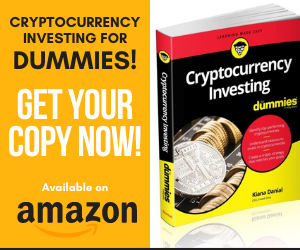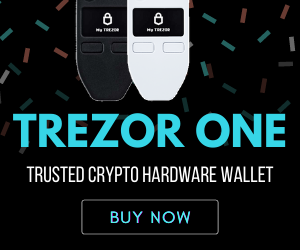
Disclaimer: The text below is an advertorial article that is not part of Cryptonews.com editorial content.
Even though crypto has sunk into a deep downtrend, progress never stops. In fact, many businesses appreciate the opportunity that bear markets give them to BUIDL, away from the limelight of a bull run. Here are five of the key themes you can expect to emerge from the crash, stronger than ever.
Web3
No discussion of blockchain trends can be complete without a mention of Web3, which is arguably the single biggest overarching theme for how the internet will develop over the next few years.
Web3 is a decentralised, open version of the internet, in which individuals as well as organisations can collectively run the services that everyone uses. It’s a far cry from Web2, the current dominant version of the internet, which is characterised by large corporations like Facebook and Google, who provide highly popular but centralised services, and who exercise a high degree of control over users and their personal data. (Web1, for reference, was characterised by static, read-only pages hosted largely by individuals and smaller organisations.)
Blockchain, as a shared ledger with use cases from financial transfers to smart contracts, is one of Web3’s key technologies, underpinning some of its core functionality – including all kinds of decentralised applications, and fungible and non-fungible tokens.
While Web3 is fundamentally an open source technology, it has received backing from big names in the tech space – not least Twitter founder Jack Dorsey, a vocal Bitcoin advocate, who plans to use the Bitcoin blockchain for identity in a hybrid version of the web, which he terms Web5.
The Metaverse
The idea of the metaverse is sometimes inaccurately conflated with Web3. But while it’s built on Web3, the metaverse (or metaverses, given that there are many) is about user experience and arguably about web culture as much as the tech on which it relies.
Metaverses offer a next-generation interface for web services – primarily the decentralised web apps provided by Web3, including play-to-earn games and broader user-generated environments. Users interact with these services and with each other via avatars, digital representations of themselves, which are often based on NFTs. Some of the best-known metaverses and their native tokens include Decentraland (MANA), Sandbox (SAND) and Somnium Space (CUBE).
As largely user-generated worlds, metaverses are often managed by Decentralised Autonomous Organisations (DAOs), with votes on how the ecosystem is to be run, maintained and developed taken by token holders. The DAO model ensures not only that the infrastructure on which these worlds are run (blockchain) has no single points of failure, but that they also avoid centralised control by a company or individual.
While there are many metaverse applications, the overall theme is that more and more of life is taking place online, with users accessing web services in a more lifelike way. As a series of 3D, navigable and interactable worlds, the metaverse brings many opportunities for individuals and businesses – to meet, chat, play, enjoy online events, engage with consumers, and even organise work and ‘office’ time. Facebook’s recent rebrand to ‘Meta’ indicates just how important this trend will be in the coming years.
Oracles
One of the key features of blockchains is that they are self-contained systems that establish decentralised consensus within their own networks. This is vital to ensure that the majority of nodes in the network agree on the content of the ledger, but it poses a problem: how is it possible to access information from the real world in a form that can be used by dApps, without compromising decentralisation? Many dApps require external information such as financial data, sports and political results, weather conditions, sources of randomness, and so on.
Oracles are the answer to this problem, providing a decentralised feed of real-world data that dApps can use – generally for a fee. To date, Chainlink (LINK) has been the most popular oracle solution, and has been integrated into hundreds of dApps. But it can be expensive, especially for smaller projects – and the nature of the space is that the more oracles, the better.
Given how much decentralised technologies are expected to grow over the coming years, and how they will be integrated with everyday services, oracles are set to be a growth area too. Uniswap (UNI) allows developers to build their own oracles, based on prices set by the DEX’s liquidity pools. Other major blockchains are creating their own approaches. Some, like the IOHK-endorsed Ergo, even treat oracles like a free public service rather than private-sector initiatives that require dApps to pay fees.
Scaling Solutions Come Of Age
Ethereum 2.0 is on the horizon, but it’s not here yet and when it does land, it will not be a panacea. Ethereum’s inability to scale has opened the door for other Layer-1 chains to take market share, with blockchains like Solana (SOL) gaining significant traction, albeit at the cost of allowing a degree of centralisation.
Other L2 platforms seek to solve the so-called ‘scalability trilemma’: that it is difficult for blockchains to offer all three features of decentralisation, throughput, and security. Platforms like Radix (XRD) promise to deliver this with an unsharded L1 that does not compromise on composability (the key DeFi property of dApps being able to interact with each other, ideally with no delays). Meanwhile, Layer-2 solutions for Ethereum including Polygon (MATIC) and Optimism (OP) have become popular, with more L2s seeking to offer scalable DeFi platforms without moving away from Ethereum itself.
Interoperability
The proliferation of both L1 and L2 chains has created an acute problem: without a way for tokens to move between them, these networks silo and fragment liquidity. Fast, secure bridges are vital to enabling liquidity to cross between chains, but bridges have proven a major point of weakness in the DeFi world, with multiple eight- and even nine-figure hacks.
Seamless interoperability is critical, since more and more projects are building and expanding to multiple chains, to leverage the large communities, network effects, and liquidity available on each. Metaverse and P2E games have helped pave the way, since microtransactions are particularly important for these applications.
For example, the Chrono.Tech ecosystem – a suite of blockchain-based crypto jobs products with links to the CGU P2E guild, uses Ethereum L1, Polygon, and Binance Smart Chain. The TIME token, which is live on Coinbase (ERC20 only), can be transferred and used freely across all three chains. Another example, the Dope Wars metaverse, hosts its core NFTs and PAPER currency token on Ethereum L1, enables users to mint and trade characters on Optimism, and is building out its game world on StarkNet.
Assess, Consolidate, BUIDL
Bear markets are a reality and a necessity in the DeFi space, pressing pause on the over-exuberance for which the crypto markets are well known. They are a time for businesses and developers to take stock, consolidate their positions, and build the products that will be used by billions when the next cycle gets under way.
By now there should be no doubt that blockchain will play a vital role in the internet of the future, with metaverse applications powered by new, high-scale and interoperable decentralised technologies offering user experiences and functionality that would have been impossible even a short time ago.



















